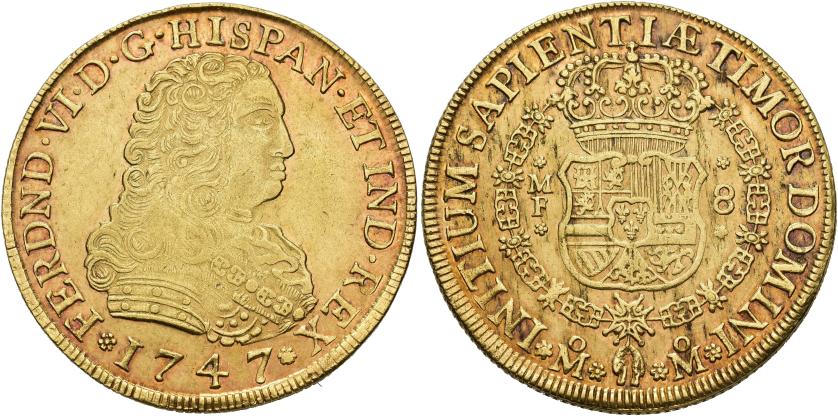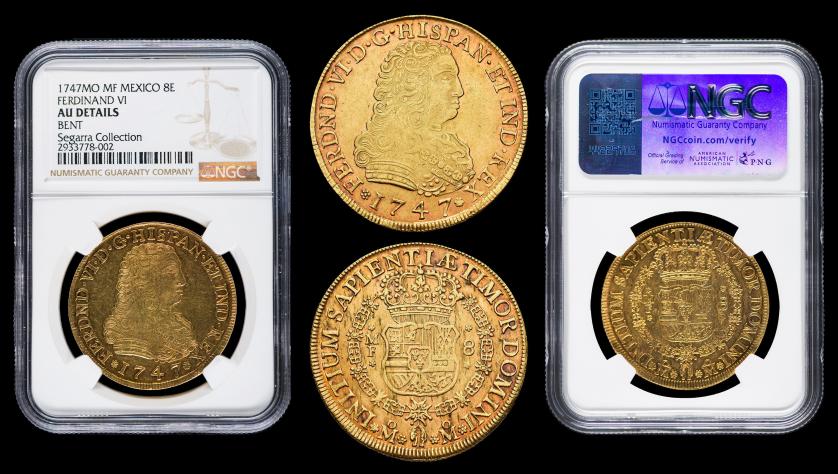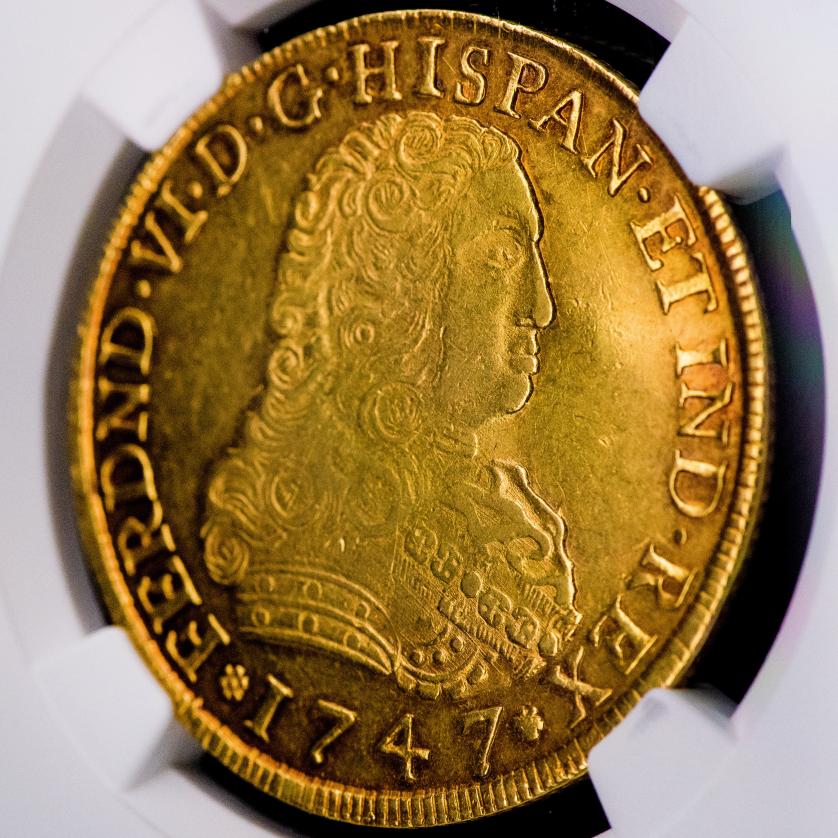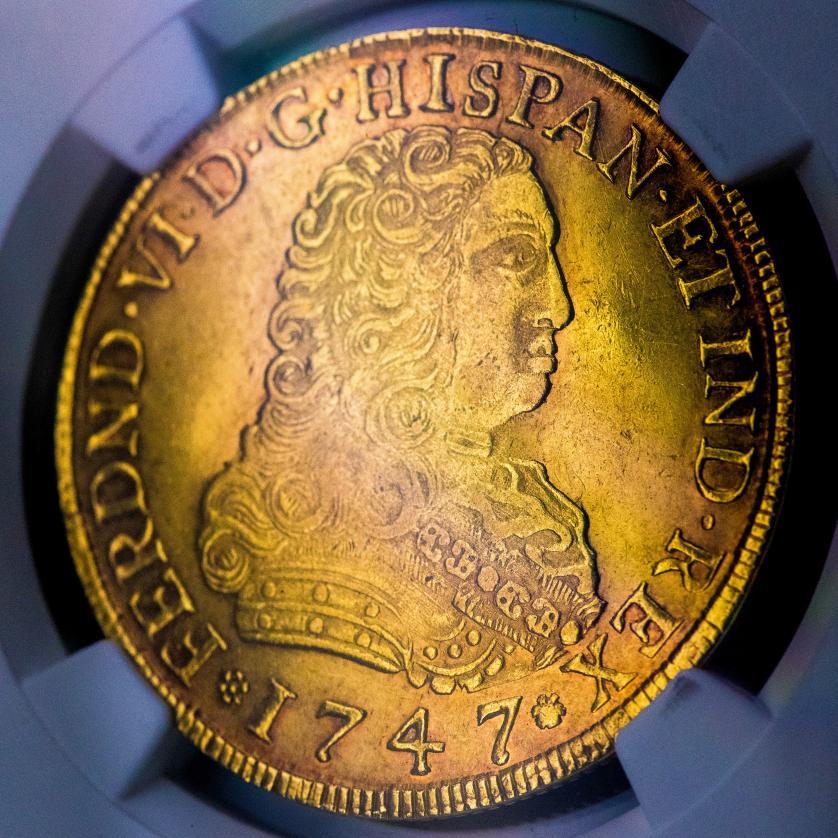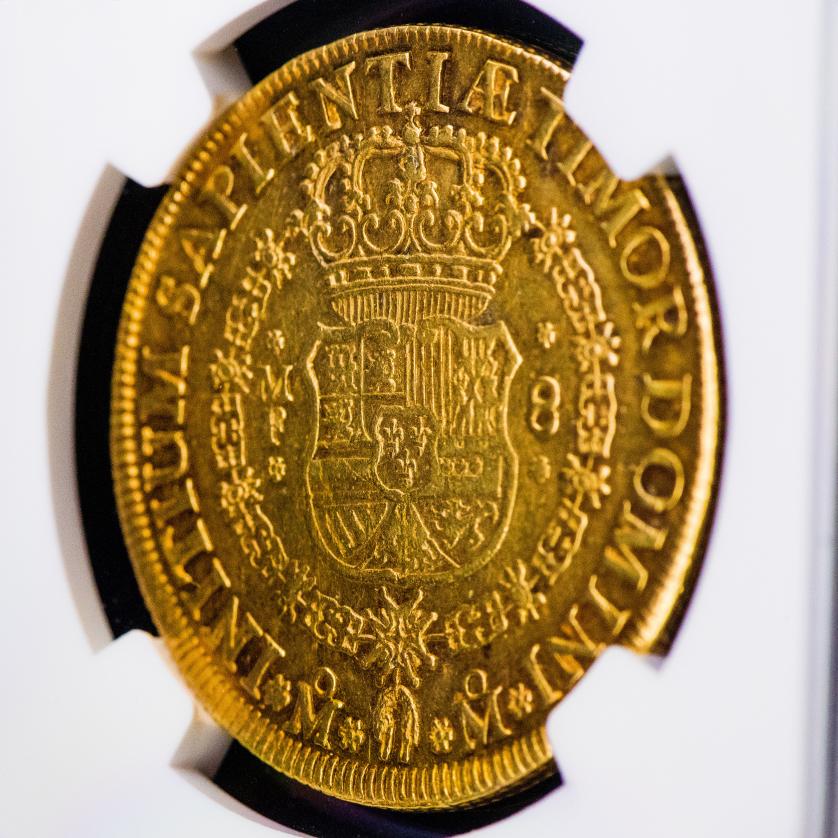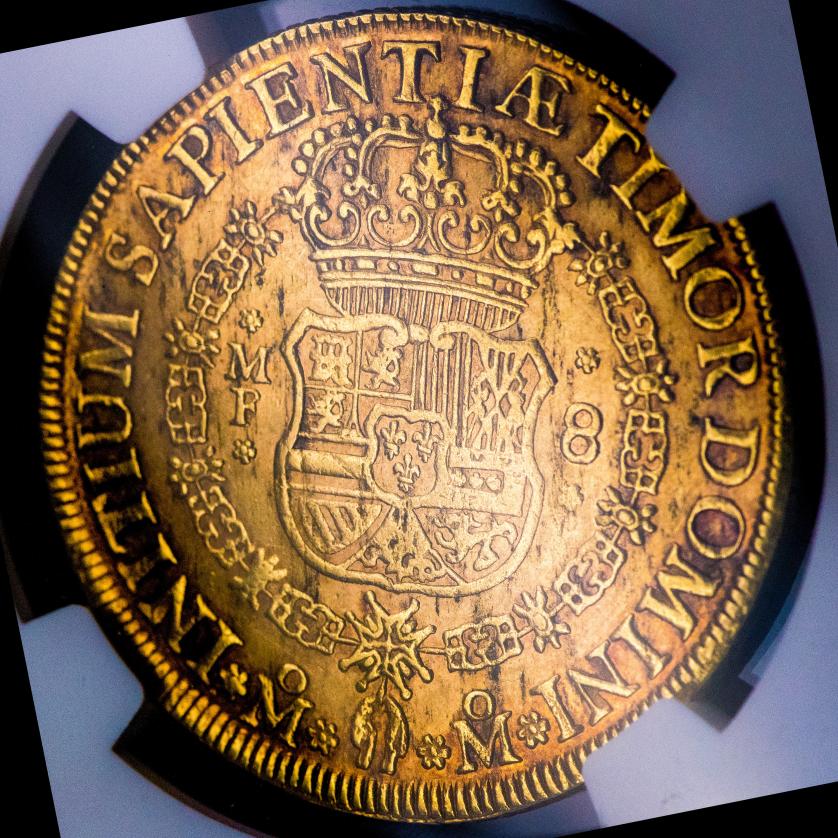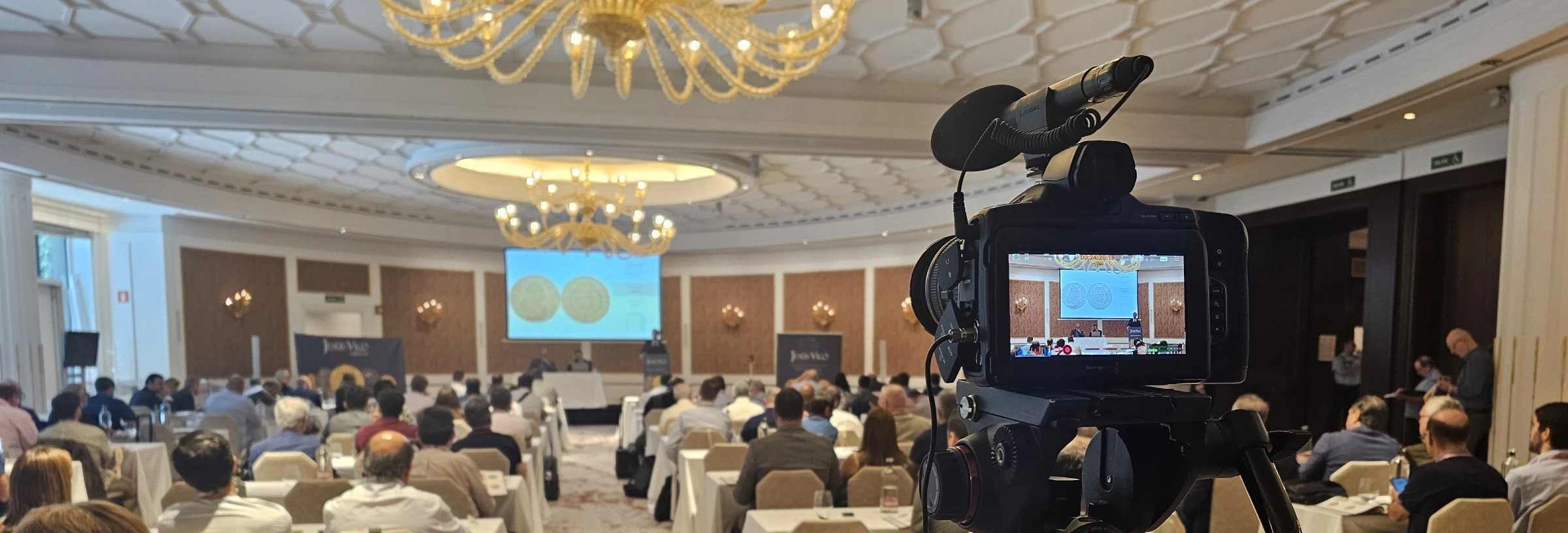Lot 2019
Auction date
26-06-2025 11:00 CET
Finalized
Starting price 18.000 €
SOLD BY 23.000 €
FERNANDO VI
Ferdinand VI. 8 escudos. 1747. Mexico. MF. "Dog face" type. AU 27,02 g. 36,8 mm. AC-780; Onza-596; VI-597. Encapsulated by NGC AU DETAILS (2933778-002). Traces of original luster. Very rare.
Categories
NumismáticaAt the beginning of the year 1747, the Mexican Mint issued gold onzas in the name of Philip V and bearing the king’s bust, identical to those of previous years. Upon receiving news of the accession to the throne of Ferdinand VI (July 1746), it began minting onzas in the name of the new monarch. These coins featured an imagined bust, popularly known as Cara Perro "Dog Face," while still retaining the religious legend associated with the previous monarch. Finally, in 1748, it struck onzas bearing the new official bust of the king and the new religious legend on the reverse. This rare 1747 issue is believed to have originated from a personal initiative of the Viceroy, Juan Francisco de Güemes y Horcasitas, who was granted the title of Count of Revillagigedo in 1749. Wishing to commemorate the proclamation of the new sovereign, and lacking the official dies, he ordered the production of dies inspired by Spanish proclamation medals that had already arrived in Mexico. These included medals from Seville—engraved by Francisco Hernández Escudero, who also created the medal of Madrid featuring a voluminous wig—as well as from Cádiz, Granada, and Puerto de Santa María, all bearing a similar bust. As a result, this coin is considered exceedingly rare and is highly valued for its unique historical significance.
Recomended lots
Confirm your maximum bid
You are bidding for €
At the time of auction we will contact you by phone:
Confirm your maximum bid
You are bidding for
€
Loading…
Conecting with the server
Are you sure you want to buy the lot?
Confirm your maximum bid
You are bidding for
€

